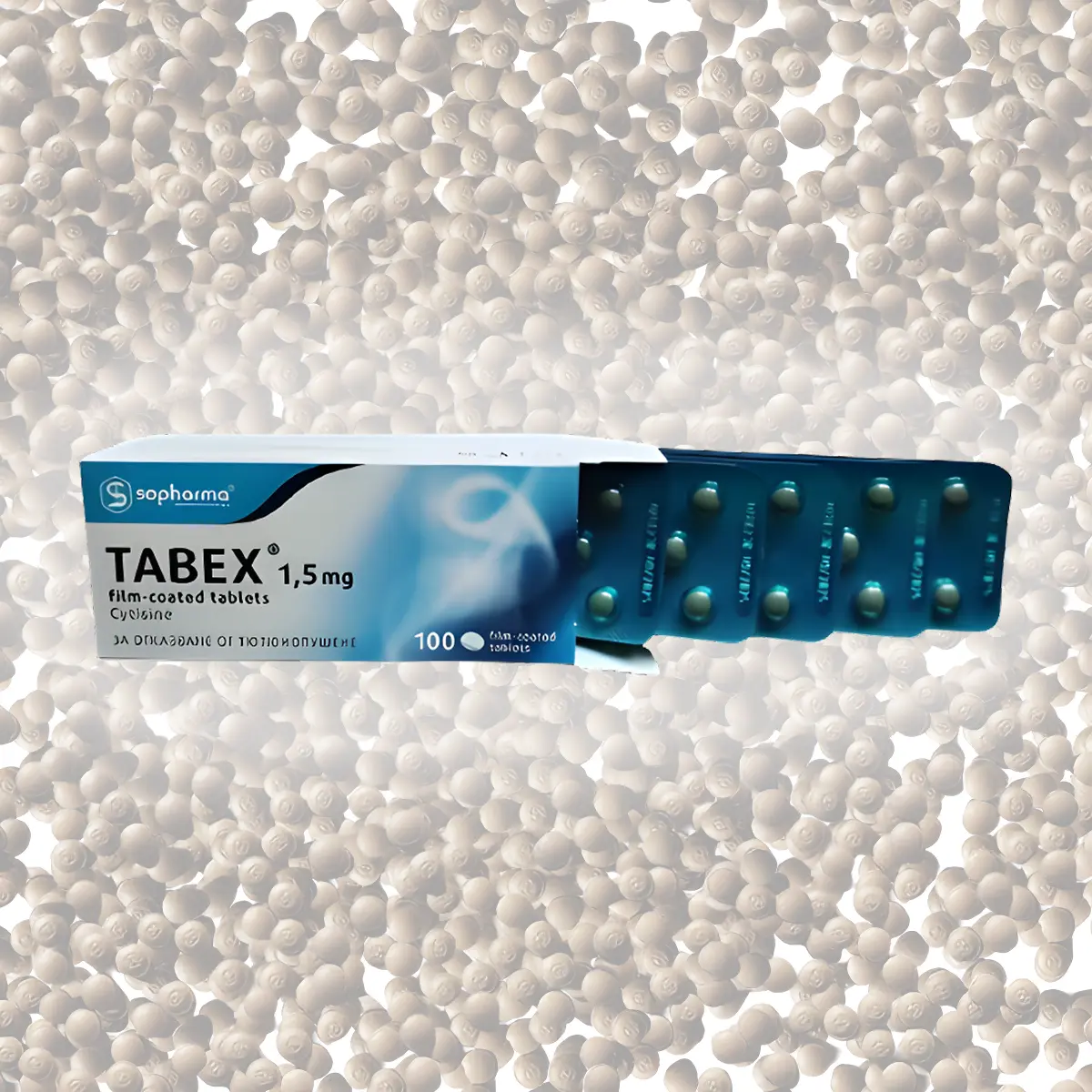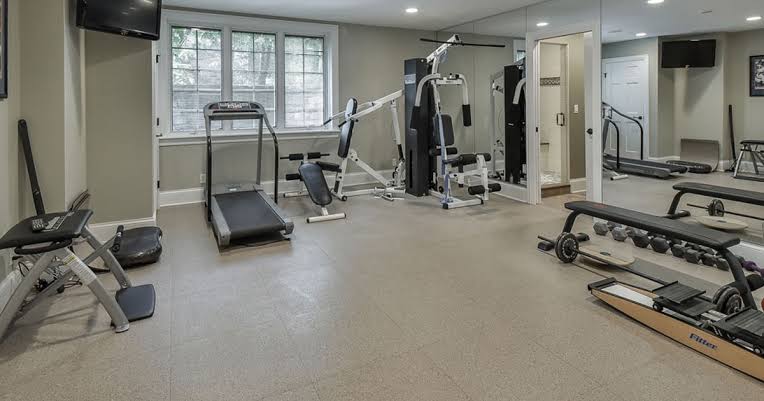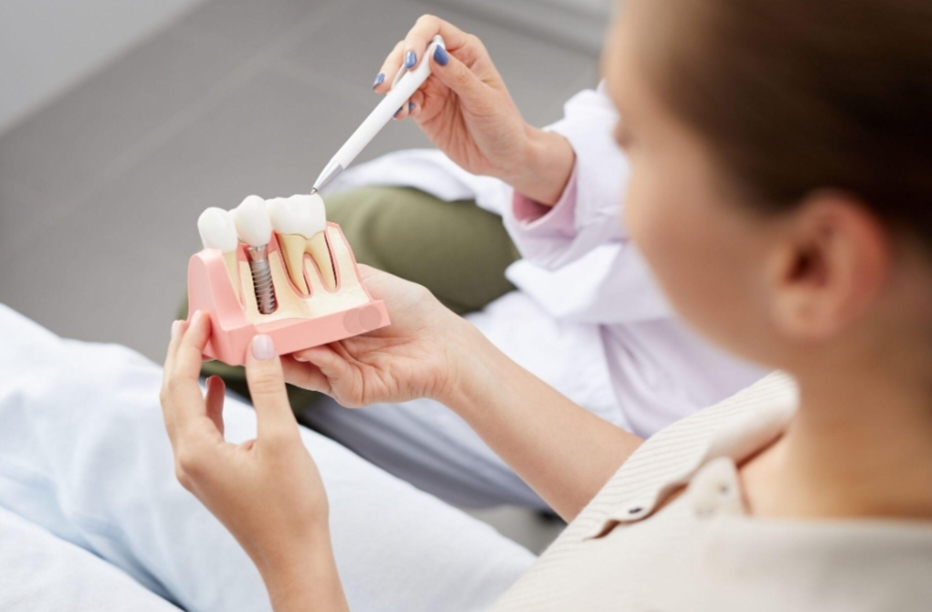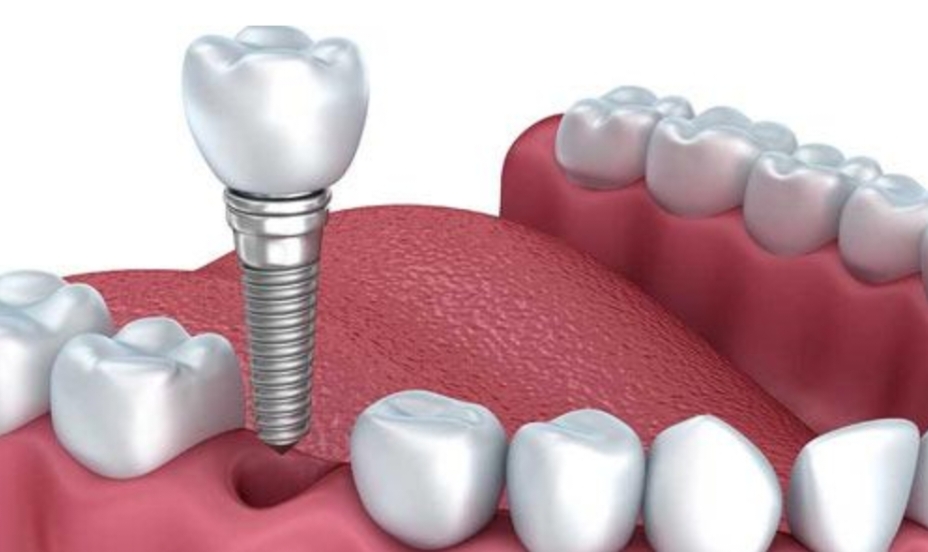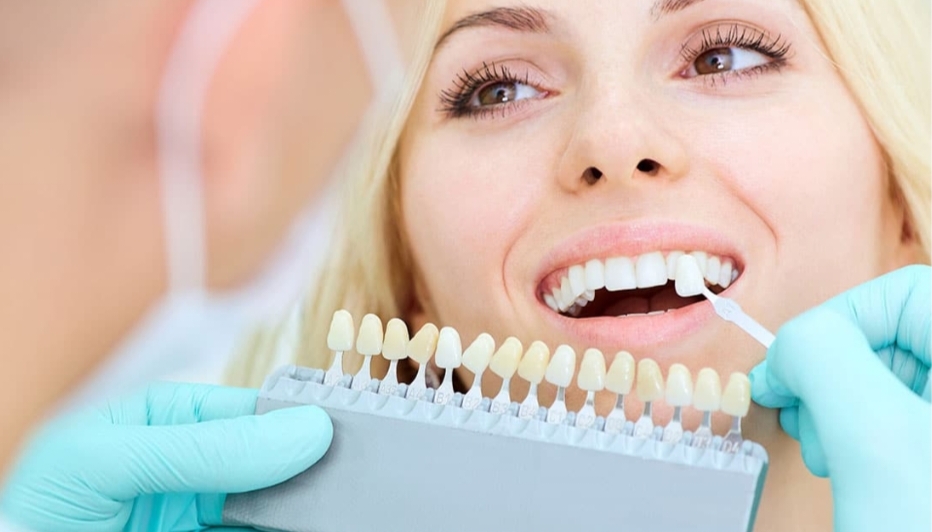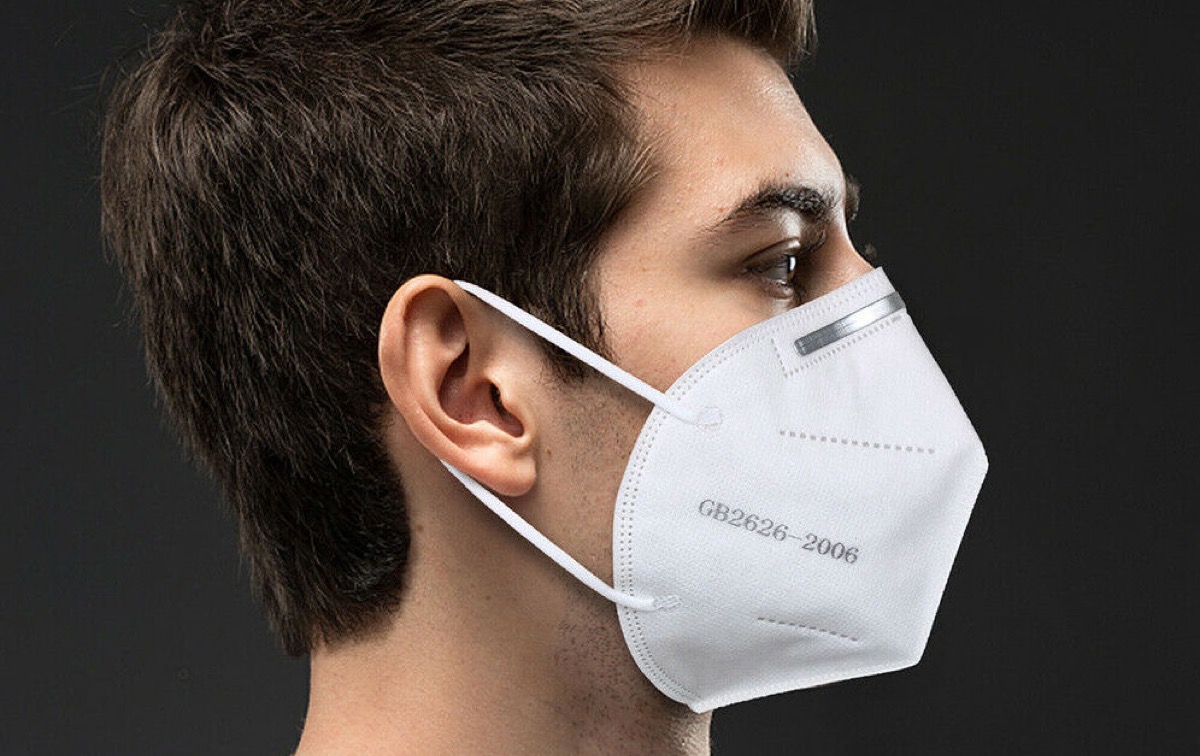Breath Of Fresh Air: The Many Health Benefits Quit Smoking!
Smoking is a habit that affects nearly every organ in the body and is a leading cause of preventable diseases and premature death worldwide. There are numerous health benefits quit smoking as it is one of the most significant steps a person can take to improve their health and well-being.
Here, we explore the numerous health benefits of quitting smoking, ranging from immediate improvements to long-term advantages.
- Immediate Health Benefits
Quit smoking journey begins to benefit health almost immediately after the last cigarette is extinguished. Within hours to days, the body starts to recover and repair itself from the damage caused by smoking.
- Improved Circulation
Nicotine causes blood vessels to constrict, which reduces blood flow to the extremities and vital organs. When a person quits smoking, their circulation improves, leading to better oxygenation of the body’s tissues.
- Lowered Carbon Monoxide Levels
Carbon monoxide, a toxic gas found in cigarette smoke, is quickly reduced in the bloodstream when smoking stops. This allows oxygen levels to return to normal, improving energy levels and reducing strain on the heart.
- Reduced Risk of Heart Attack
Within 24 hours of quitting smoking, the risk of heart attack begins to decrease. This risk continues to drop over time, leading to a significantly lower chance of heart disease-related complications.
- Respiratory Health
Smoking damages the lungs and airways, contributing to the development of chronic respiratory diseases. Quitting smoking can reverse some of this damage and improve lung function.
- Decreased Risk of Respiratory Infections
Quitting smoking reduces the risk of respiratory infections such as colds, flu, bronchitis, and pneumonia. The immune system becomes stronger, and the lungs can better defend against infections.
- Improved Lung Function
Over time, lung function improves after quitting smoking. The lungs start to heal, allowing for a better capacity to breathe and exercise.
- Reduced Risk of COPD
Chronic obstructive pulmonary disease (COPD) is a serious lung disease that includes chronic bronchitis and emphysema.
- Cancer Prevention
Quitting smoking lowers the risk of developing cancer and improves the chances of successful treatment for those who have already been diagnosed.
- Lowered Risk of Lung Cancer
Lung cancer is the most common cancer associated with smoking. Quitting smoking reduces the risk of lung cancer, even after many years of smoking.
- Reduced Risk of Other Cancers
Quitting smoking also reduces the risk of other types of cancer, including cancers of the mouth, throat, esophagus, bladder, kidney, and pancreas.
- Improved Oral Health
Smoking damages oral health in numerous ways, from staining teeth to increasing the risk of gum disease and tooth loss. Quitting smoking can lead to significant improvements in oral health.
- Whiter Teeth and Fresher Breath
Teeth staining from smoking can be reduced or eliminated after quitting, leading to whiter teeth and fresher breath.
- Reduced Risk of Gum Disease
Quitting smoking lowers the risk of gum disease, which can lead to tooth loss and other oral health problems.
- Better Overall Health And Longevity
Quitting smoking has a profound impact on overall health and can extend a person’s life expectancy.
- Improved Quality of Life
Quitting smoking improves quality of life by reducing the risk of smoking-related diseases and improving overall physical fitness.
- Longer Life Expectancy
Non-smokers generally live longer than smokers. Quitting smoking at any age can increase life expectancy and improve the quality of life in the remaining years.
- Financial and Social Benefits
Beyond the health benefits, quitting smoking can lead to financial savings and improve social interactions.
- Financial Savings
Quitting smoking saves money on the cost of cigarettes and reduces healthcare expenses related to smoking-related illnesses.
- Improved Social Interactions
Quitting smoking can improve social interactions by reducing the stigma associated with smoking and avoiding the inconvenience of having to smoke away from others.
- Support And Resources
Quitting smoking can be challenging, but there are many resources and support systems available to help individuals succeed.
- Counselling and Support Groups
Behavioral counselling and support groups can provide encouragement and strategies for smoking cessation.
- Medications and Therapies
Nicotine replacement therapies and other medications like Quit smoking pills can help manage cravings and withdrawal symptoms during the quitting process.
- Online and Mobile Apps
Mobile apps and online programs can provide tips, tracking tools, and support to help individuals quit smoking.
Conclusion
Giving up smoking is one of the most crucial things a person can do to make their health and life better.
The health benefits of quitting smoking are substantial and immediate, ranging from improved circulation and lung function to a reduced risk of heart disease, cancer, and respiratory infections.
Beyond health benefits, quitting smoking can lead to financial savings and improved social interactions. With the right support and resources, anyone can successfully quit smoking and enjoy a healthier, smoke-free life.
If you are looking for medications to help you quit smoking, visit our website at Tabex Official for more information and support
Vitamin Bioavailability: What You Need to Know
Remember that morning orange you devoured, hoping for a vitamin C kick? Turns out, grandma’s legendary homemade orange juice might be the real powerhouse. The secret ingredient? Bioavailability – fancy term for how much of a vitamin’s goodness your body can actually use.
Vitamins and multivitamins are great supports for everything from strong bones to a sharp mind. But just like ninjas needing special training to unleash their full power, vitamins need something to unlock their potential. That’s where bioavailability comes in.
The Body’s Balancing Act: Unveiling Bioavailability
Imagine you stumbled upon a treasure chest overflowing with vitamins or an all-in-one multivitamin, but there’s a tricky lock on it, and maybe even some guards! That’s kind of how bioavailability works. It’s the percentage of a vitamin your body can actually absorb and put to good use, whether it comes from yummy food or handy supplements.
- Mission: This is where the treasure chest (hopefully) unlocks. Your body uses different methods to grab vitamins, like having different tools for different jobs. Some vitamins, like water, just slip right in (passive diffusion), while others need a more specific tool (active transport) to get absorbed.
- The Body’s Busy Lab: Once a vitamin gets absorbed, it goes on an adventure inside you. It might get activated, transformed, or even eliminated. This whole journey through your body’s “lab” affects how much vitamin goodness is ultimately available for your cells to use.
- Vitamin Squad: Vitamins aren’t loners. They can work together or compete with each other, like a superhero team-up or a playground scuffle.
The Great Bioavailability Challenge
Imagine factors like soil quality or how you prepare your food affecting how much vitamin treasure your body can access. Here are some key influences:
- Food Matrix: Vitamins come in different packages within food. Some are free-floating, while others are bound to proteins or trapped within cell walls. This “food matrix” can influence how easily your body extracts the vitamins. For instance, vitamin A hidden within plant cell walls might be less bioavailable than its readily available counterpart from animal sources.
- Digestive Health: A healthy digestive system is like a well-oiled machine for unlocking vitamin treasures.
- Nutrient Status: Your body’s existing vitamin and mineral levels can influence how it absorbs new ones. Deficiencies or excesses can create imbalances, affecting overall bioavailability.
Strategies for Better Bioavailability
While you can’t directly control how much vitamin goodness your body stashes away, there are ways to give your internal heist crew a helping hand:
- Rainbow Raid: Imagine a grocery store overflowing with all sorts of colorful vitamin treasures. The more variety you grab the more types of vitamins you’ll be supplying your body with, in all their different forms. This diversity helps your body unlock a wider range of vitamin goodness.
- Power Couples: Sometimes, teaming up is the best way to pull off a heist. Certain food combinations can seriously boost how much your body absorbs vitamins. Think of vitamin C in bell peppers like the ultimate sidekick, helping your body grab more iron from those delicious lentils. It’s a nutritional dream team!
- Food Processing: This might surprise you, but some sneaky processing techniques can actually be helpful for our vitamin heist. Cooking can break down those tough cell walls in vegetables, making the vitamins easier to access. And don’t forget about the power of fermentation! The friendly bacteria in yogurt can actually make B vitamins easier for your body to absorb.
Conclusion
Bioavailability is like a complex heist – your body’s gotta work its way around all sorts of obstacles to get to the vitamin treasure it needs. But by understanding these challenges and employing these sneaky strategies, you can empower your body to unlock the full potential of all those essential nutrients. Remember, the best way to keep your vitamin vault well-stocked is to focus on a balanced and varied diet rich in whole foods.
Must-Have Home Gym Equipment
Building a home gym is a dream for fitness enthusiasts. A home gym allows you to work out from the comfort of your home, saving time on commuting and gym membership.
However, the true potential of a home gym can only be realized with the right gym equipment. This equipment, carefully chosen to align with your fitness goals and the space available, will ensure that every workout is a step towards your fitness success.
Let’s examine the types of fitness equipment available so that you can find the one that best suits your fitness routine.
What are the types of gym equipment?
In recent times, the fitness world has seen a boom in new equipment. Whether you’re looking to lose fat or gain muscle, there are tons of things on the market that can help. Cardio, Strength training, and functional training are some of the types of gym equipment. Each type has its functions and helps you get fit in your way. Here is a simple breakdown of this equipment.
Cardiovascular Equipment
Cardiovascular equipment is a type of fitness equipment that aids in doing prolonged physical activity to boost endurance and burn calories. These fitness equipment are beneficial for high-intensity training, full-body engagement, and low-impact exercises.
These advantages also make it appropriate for a variety of fitness levels and objectives. It’s important to take your specific fitness objectives and the essential features into account when selecting cardiovascular equipment for your home in order to create a conducive training environment.
| Equipment | Benefits | Features to Consider | Space Requirements |
| Treadmill | Versatile; improves heart health; burns calories | Sturdy frame, powerful motor (2.5 HP), adjustable incline, cushioned deck, foldability | 6-7 feet in length, 3 feet in width |
| Stationary Bike | Low-impact; strengthens legs; suitable for joint issues | Seat comfort, adjustability (seat and handlebars), resistance levels, quiet operation | 4-5 feet in length, 2 feet in width |
| Elliptical Trainer | Low-impact, full-body workout; improves coordination | Front/rear/center-drive, moving handlebars, compact/foldable design | 6 feet in length, 2.5 feet in width |
| Rowing Machine | Full-body workout; improves cardiovascular and muscular fitness | Smooth rowing mechanism, adjustable resistance, foldability | 8 feet in length, 2 feet in width |
| Stair Climber | Intense lower body workout; burns calories | Adjustable step height, smooth operation, sturdy frame | 4-5 feet in length, 2 feet in width |
| Jump Rope | High-intensity; portable; improves coordination | Durable material, adjustable length, comfortable handles | Minimal; requires open space for movement |
| Air Bike | Full-body workout; variable resistance | Sturdy frame, comfortable seat, adjustable handlebars, smooth fan resistance | 4 feet in length, 2 feet in width |
| Stepper Machine | Low-impact; strengthens legs and glutes | Adjustable resistance, sturdy construction, compact design | 2-3 feet in length, 2 feet in width |
| Hybrid Trainer | Combines elliptical and bike; versatile workout | Adjustable seat, stride length, resistance levels, compact design | 5-6 feet in length, 2.5 feet in width |
| Spin Bike | High-intensity; simulates outdoor cycling | Heavy flywheel, adjustable resistance, comfortable seat, sturdy frame | 4-5 feet in length, 2 feet in width |
Strength Training
Strength training is fitness equipment that helps to target specific muscle groups to improve strength and muscle tone. The equipment provides the consistent challenge to your muscles through resistance to help stimulate muscle growth and development over time. Additionally, it can contribute to better bone health, enhance metabolism, and improve functional fitness.
| Equipment | Benefits | Features to Consider | Space Requirements |
| Adjustable Dumbbells | Versatile, space-efficient, and suitable for all fitness levels. | Weight range, adjustment mechanism, grip comfort. | Requires minimal space, about 2-3 square feet. |
| Barbell and Weight Plates | Essential for compound movements, significant muscle-building potential. | Barbell length and weight capacity, plate material (rubber-coated vs. metal), storage solutions. | Needs space for a barbell and plates, about 5-7 feet long. |
| Kettlebells | Ideal for dynamic exercises, improves strength, endurance, and power. | Weight options, handle grip, material (cast iron vs. competition). | Requires minimal space, about 2-3 square feet. |
| Resistance Bands | Portable and versatile, great for strength training and rehabilitation. | Resistance levels, durability, handle attachments. | Requires minimal storage space, easily stored in drawers. |
| Power Rack | Provides a safe environment for heavy lifting, supports various exercises. | Sturdiness, height and width, compatibility with attachments (dip bars, pull-up bars). | Needs significant space, about 7-8 feet in height and 4-5 feet in width. |
| Weight Bench | Essential for bench presses, flyes, adjustable for incline/decline. | Adjustability (flat, incline, decline), padding thickness, weight capacity. | Requires about 6 feet in length and 2-3 feet in width. |
| Medicine Ball | Useful for explosive movements, core training, and functional fitness. | Weight options, material (rubber vs. leather), grip texture. | Requires minimal space, about 1-2 square feet. |
| Smith Machine | Offers guided barbell movements, adds stability and safety. | Smoothness of bar movement, available attachments, weight capacity. | Needs significant space, about 7-8 feet in height and 4-5 feet in width. |
| Pull-Up Bar | Great for upper body and core strength, allows various grips. | Mounting type (doorway, wall-mounted, free-standing), grip options, weight capacity. | Requires minimal space, about 3 feet in width. |
| Leg Press Machine | Focuses on lower body strength, provides a controlled and safe workout. | Adjustable seat and backrest, smoothness of movement, weight capacity. | Needs significant space, about 6-7 feet in length and 3-4 feet in width. |
| Cable Machine | Extremely versatile, allows a wide range of exercises. | Number of pulleys, adjustable height, attachment variety, smoothness of cable movement. | Needs significant space, about 6-8 feet in height and 4-6 feet in width. |
Functional Trainer
Unlike strength training, the functional trainer is a versatile piece of equipment designed to improve functional training exercises that mimic real life movement. Functional trainers provide multi plane movement that engage multiple muscle groups simultaneously to improve stability and strength. With various attachments like handles, bars and straps helps to customize the workout to target the specific areas. Functional trainers are popular for rehabilitation, sports-specific training, and functional fitness routines aimed at improving everyday movements and activities.
| Equipment | Benefits | Features to Consider | Space Requirements |
| Stability Ball | Improves core strength and balance | Size, anti-burst design | Enough for rolling |
| Kettlebells | Versatile for strength and cardio | Weight range, grip comfort | Compact storage |
| Resistance Bands | Portable, variable resistance | Resistance levels, durability | Minimal stretching space |
| Suspension Trainer | Uses body weight for resistance | Adjustable straps, anchoring point | Ample movement space |
| Foam Roller | Aids in muscle recovery and flexibility | Density, length | Enough for rolling |
| Medicine Ball | Enhances strength and coordination | Weight, grip surface | Minimal tossing space |
| Balance Board | Improves balance and coordination | Size, surface texture | Adequate for movement |
| Agility Ladder | Enhances footwork and agility | Length, non-slip design | Flat surface |
| Bosu Ball | Challenges balance and stability | Size, sturdy base | Enough for movement |
| Battle Ropes | Develops upper body strength | Length, quality handles | Swing space, anchor point |
Conclusion
Having the necessary home gym equipment can greatly improve both your general health and the quality of your workouts. Every piece of equipment, from strength training instruments like dumbbells and resistance bands to cardiovascular machines like treadmills and stationary bikes, has special advantages for raising fitness levels and reaching individual health objectives.
It is possible to set up a practical and efficient home workout area by choosing the appropriate equipment according to your needs, available space, and financial limits.
Whether your goals are to increase flexibility, strengthen your muscles, or improve your cardiovascular health, investing in essential fitness equipment will enable you to maintain consistency in your training and live a longer, healthier life.
How does Ayurveda help in postnatal care? Know the secret
There is no greater feeling than being a mother, as it’s the most beautiful experience in this world.
But usually after 6-8 weeks of giving birth, a mother goes through multiple complexities. These health complexities, if not cared for at the right time, can lead to serious fatality in the long term.
Getting treatment of Ayurveda in Sunshine Coast for post-pregnancy can be effective as well as relieve the mother of all associated complexities.
Know these natural ways of Ayurveda for postnatal care
Ayurvedic postnatal care in Sydney can be a direct substitute for costly postnatal treatments. Many people recommend hydrotherapy, or prenatal vitamins, but all of these have so many side effects that it’s better to get with Ayurveda.
What complications arise after pregnancy?
Many mothers have reported feelings of nausea and constant headaches after hydrotherapy. Even research has supported this fact stating that hydrotherapy causes irregular heartbeats and often lowers immunity power.
There are medical drugs also meant to reduce the complexities of postnatal conditions, like prenatal vitamins and supplement diets, but each of them has unavoidable side effects.
The digestive systems of a mother get highly disturbed by prenatal medicines. These side effects can be constipation, and a feeling of bloating, and can even lead to IBS in the long-term.
Another side-effect of postnatal care is the use of painkillers to ease the pain. Painkillers may ease the pain for the time being, although it’s not much good for the mother.
Ayurveda is the best solution to this, as it neither uses a temporary method of relieving the pain nor causes stomach irritation.
Now, after reading so many effects, it’s better to read how you can get the best solution through Ayurveda in Sunshine Coast.
The power of the Dashmularishta process
According to Ayurveda, a mother undergoes an imbalance of vata immediately after childbirth, which brings so much complexity. Depression, insomnia, uncontrolled vaginal discharge, and complexions in breastfeeding arise.
Ayurvedic science says that all of this happens because the vata gets too distorted by emptying the womb, and so the main motive of Ayurveda is to remedy the vata dosha.
Vata problem is treated by ayurvedic process by using a mix of ten key ayurvedic herbs. This is the process of dashmularishta, which is a tonic liquid prepared by an expert Ayurvedic clinic.
If you visit Ayurvedic postnatal care in Sydney, you’ll readily get this tonic at standard price. The mother needs to have this with water in a directed dosage every day to fix the postnatal complexities.
Dashmularishta mixture is used for multiple problems associated with childbirth too, like controlling vaginal discharge and warding off post-child-birth depression. The mixture includes dasamoola (ten types of ayurvedic herbal roots) and extracts of Triphala (an ayurvedic herb).
Combining these ingredients makes the process completely useful for mothers after delivering their children. Additionally, recognizing symptoms of trichomoniasis, such as unusual vaginal discharge, itching, and discomfort, is crucial for postpartum women to ensure they receive appropriate treatment if needed.
Uses abhyanga
Abhyanga in Ayurveda simply means a herbal oil massage and a mother in a postnatal condition will need a full body massage.
A mother’s body usually goes through so many complexities such as losing blood, which may sometimes turn into a haemorrhage condition. Sometimes, even respiratory problems and weight loss can also occur.
Abhyanga uses oil massage, which has the benefit of freeing the muscles from pain as well as removing insomnia. The entire body gets better blood flow and reduces inflammation, so this is another reason for using abhyanga.
Suggests some nourishing exercises
Multiple exercises have been suggested by Ayurveda, and these exercises are very helpful for mothers.
Balasana pose is recommended by Ayurveda Sunshine Coast where a mother can let her entire body stretch and relax
Gomukhasan is another good recommendation by Ayurveda which encourages sitting with legs crossed and clasping hands back for a relaxed breathing.
These two are the major exercises that have been suggested by Ayurveda, as these exercises don’t create pressure on the belly and neither does pain in the joint muscles.
All of these exercises do help in a natural blood flow increase, and improve the pelvic muscle. After childbirth, pelvic muscles may get through complications and this is why these exercises are needed.
Change in food habits
Ayurvedic postnatal care in Sydney offers a complete holistic approach to freeing the mother from all post-pregnancy complexities. An Ayurvedic method is completely natural, so it does include a change in food habits.
A mother usually loses blood during delivery, so she will need better care to heal from the major complications that come from blood loss. Because ayurvedic science claims that the vata increases as the womb gets empty, it can lead to large-scale digestive problems as well as anaemia. Also, a mother will need to feed the baby her breast milk, so she needs a complete nutritional diet.
The food mentioned by Ayurveda are:
- Raisin, almond, dates
- Kulekhara herb (meant to replenish the loss of blood in the mother)
- Fenugreek paste with bitter gourd
- The baby will need proper nourishment, so Shatavari Kalpa is a great food.
Conclusion
All these natural tips offered by Ayurveda Sunshine Coast are a great means for removing all postnatal difficulties.
Always remember, that proper massage, a nourishing diet and taking care of mental health are key ways to overcome postnatal problems. Only Ayurveda ensures that these things are done at the right time.
Unveiling the Smile Revolution: A Comprehensive Guide to Dental Implants
In the ever-changing world of dentistry, dental implants stand out as a revolutionary treatment, improving smiles and restoring confidence for millions worldwide. More than just tooth replacements, these wonders of contemporary dentistry provide a permanent and natural-looking alternative, revolutionising how we approach dental care. From its inception to its present state-of-the-art improvements, this essay goes deep into dental implants, analysing their history, advantages, treatments, and prospects.
Understanding Dental Implants: A Brief History
The idea of dental implants Brisbane extends back thousands of years, with archaeological evidence indicating that ancient civilisations experimented with various materials to replace lost teeth. However, over the twentieth century, substantial advances in implant dentistry began to emerge. In the 1950s, Swedish orthopaedic physician Per-Ingvar Brånemark accidentally discovered the process of osseointegration, which involves titanium fusing with bone tissue. This important finding paved the way for current dental implantology, transforming tooth replacement procedures.
The Anatomy of Dental Implants
At its core, a dental implant comprises three essential components: the implant fixture, the abutment, and the prosthetic crown. The implant fixture, typically made of biocompatible titanium, is the artificial tooth root, anchoring securely into the jawbone. Over time, the surrounding bone integrates with the implant, providing unparalleled stability. The abutment joins the implant device to the prosthetic crown, which is custom-made to match the form, size, and colour of the natural teeth, providing a smooth integration into the patient’s smile.
Benefits of Dental Implants
The advantages of dental implants Perth extend far beyond aesthetic appeal, offering a multitude of benefits for patients:
- Improved Oral Health: Unlike traditional dentures or bridges, dental implants preserve adjacent teeth by eliminating the need for alteration or support structures. This helps maintain the integrity of the natural dentition and promotes long-term oral health.
- Enhanced Comfort and Functionality: Dental implants mimic the look, feel, and function of natural teeth, allowing for comfortable chewing, speaking, and smiling without the discomfort or inconvenience associated with removable prosthetics.
- Longevity and Durability: With proper care and maintenance, dental implants can last a lifetime, making them a cost-effective solution compared to alternative tooth replacement options.
- Enhanced Self-Confidence: Restoring a complete and beautiful smile can significantly boost self-esteem and confidence, empowering individuals to socialise, speak, and eat without hesitation or embarrassment.
The Dental Implant Procedure: What to Expect
While undergoing dental implant surgery may seem scary, the operation is relatively uncomplicated and less invasive when conducted by a trained and experienced dental practitioner. Here’s a step-by-step overview of what to expect:
- Initial Consultation: The trip begins with a complete examination and consultation, during which the dentist evaluates the patient’s dental health, discusses treatment objectives, and develops a tailored treatment plan.
- Preparatory Procedures: In rare situations, patients may need preparatory treatments like bone grafting or sinus enlargement to establish a solid foundation for implant insertion. These operations assist to improve bone density and volume in locations where the jawbone has deteriorated owing to tooth loss or other causes.
- Implant Placement: Once the jawbone has been prepped, the dental implant fixture is surgically implanted in the appropriate location while under local anaesthesia or sedation. The healing process, known as osseointegration, normally lasts many months while the implant combines with the surrounding bone tissue.
- Abutment Placement: After the osseointegration process is complete, an abutment protrudes above the gum line and is attached to the implant fixture. This allows for the secure attachment of the prosthetic crown.
- Crown Placement: The next stage is to fabricate and place the prosthetic crown, which is precisely designed to match the colour, shape, and size of the natural teeth. The crown, once attached to the abutment, restores both the appearance and functioning of the patient’s smile.
Post-Operative Care and Maintenance
Diligent post-operative care is crucial to ensure optimal healing and long-term success after dental implant surgery. Patients are advised to:
- Follow all their dentist’s post-operative instructions, including oral hygiene, diet, and medication guidelines.
- Attend frequent follow-up appointments to assess healing progress and resolve any issues.
- Practise good oral hygiene habits, including brushing twice daily, flossing regularly, and using antimicrobial mouthwash to maintain oral health and prevent infection.
- Avoid habits that may compromise implant stability, such as smoking, excessive alcohol consumption, or chewing on complex objects.
Future Trends and Innovations in Dental Implantology
As technology advances, the dental implantology field is poised for further innovation and evolution. Some emerging trends and developments include:
- Digital Dentistry: Integrating digital technologies such as 3D imaging, computer-aided design (CAD), and computer-aided manufacturing (CAM) has revolutionised treatment planning, implant placement, and prosthetic fabrication, resulting in greater precision, efficiency, and patient satisfaction.
- Biomaterials and Surface Modifications: Ongoing research in biomaterials science aims to develop implant materials with enhanced biocompatibility, osseointegration, and antimicrobial properties. Surface modifications such as nanotexturing and bioactive coatings hold promise for improving implant success rates and longevity.
- Regenerative Therapies: Regenerative techniques utilising growth factors, stem cells, and tissue engineering hold the potential for enhancing bone regeneration and soft tissue healing around dental implants, ultimately improving treatment outcomes and patient experiences.
Conclusion
To summarise, dental implants are a paradigm change in modern dentistry, providing a transformational option for people suffering from tooth loss or dental difficulties. With its various advantages, natural looks, and long-term durability, dental implants have become the gold standard for tooth replacement, allowing people to restore their smiles and quality of life. As research and innovation continue to drive advancements in implant dentistry, the future offers enormous promise for improving the safety, efficacy, and accessibility of this life-changing treatment option.
Nurturing Smiles: A Comprehensive Guide to Dental Care in Templestowe
Nestled in the picturesque suburb of Templestowe lies a hidden gem in dental care. With a commitment to excellence and a passion for oral health, dentist Templestowe stands at the forefront of providing top-tier dental services to the local community. This comprehensive guide delves into the world of dental care in Templestowe, exploring the expertise, services, and patient-centric approach that define dental practices in this vibrant suburb.
The Importance of Dental Care
Dental care is essential to general health and well-being, covering preventative, restorative, and cosmetic treatments to preserve healthy teeth and gums. Regular dental checkups assist in avoiding oral health problems like cavities, gum disease, and tooth loss and contribute to overall health by lowering the risk of heart disease, diabetes, and respiratory infections.
Dentists in Templestowe: A Tradition of Excellence
Templestowe dental clinic is home to diverse dental practices, each distinguished by its commitment to quality care, patient comfort, and cutting-edge treatments. Dentists in Templestowe are known for their:
- Expertise and Experience: With extensive training and years of experience, dentists in Templestowe possess the knowledge and skills to address a wide range of dental concerns, from routine cleanings and exams to complex restorative procedures.
- State-of-the-Art Facilities: Dental practices in Templestowe are equipped with advanced technology and modern amenities designed to enhance the patient experience and ensure optimal treatment outcomes. From digital imaging systems to chairside monitors, these facilities leverage innovative tools to deliver superior dental care.
- Personalised Approach: Dentists in Templestowe prioritise individualised care, taking the time to understand each patient’s unique needs, concerns, and treatment goals. Whether alleviating dental anxiety, addressing cosmetic imperfections, or restoring oral function, they tailor their services to meet each patient’s needs.
Comprehensive Dental Services
Dental practices in Templestowe offer comprehensive services to address the diverse needs of patients of all ages. These services include:
- Preventive Care: Routine dental cleanings, examinations, and hygiene education are critical for avoiding dental disorders and maintaining good oral health. Dentists in Templestowe highlight the need for preventative care as the cornerstone of a healthy smile.
- Therapeutic Treatments: From fillings and crowns to root canal therapy and dental implants, dentists in Templestowe specialise in restoring damaged or missing teeth to their complete form and function. Utilising the latest techniques and materials, they provide durable and aesthetically pleasing restorations that blend seamlessly with natural teeth.
- Cosmetic Dentistry: Cosmetic procedures, including tooth whitening, veneers, and cosmetic bonding, help patients improve the appearance of their smiles and raise their confidence. Dentists in Templestowe provide individualised cosmetic treatments based on each patient’s tastes and goals.
- Orthodontics: Straightening crooked or misaligned teeth can improve the smile’s aesthetics and functionality. Dentists in Templestowe offer orthodontic treatments such as traditional braces, clear aligners, and retainers to achieve optimal alignment and byte function.
- Oral Surgery: Complex dental disorders may necessitate oral surgery. Templestowe dentists execute operations such as tooth extractions, wisdom tooth removal, and dental implant installation with accuracy and care, guaranteeing the best possible patient outcomes.
Promoting Oral Health and Wellness
In addition to delivering excellent dental care, Templestowe dentists are dedicated to promoting oral health and wellness across the community. They aim to create awareness about the necessity of excellent oral hygiene practices and frequent dental exams through patient education, community outreach projects, and collaborations with local groups.
Conclusion
Finally, dentists in Templestowe are committed to offering excellent dental treatment in a friendly and inviting setting. With their experience, cutting-edge facilities, and dedication to patient-centred treatment, they work to enhance the oral health and quality of life of people and families throughout the community. Whether you require a routine examination or restorative or cosmetic treatment, Templestowe dentists will provide personalised attention and remarkable outcomes.
A Comprehensive Guide to Dental Implants and Wisdom Tooth Removal
In the realm of oral health, two common procedures often come to the forefront: dental implants and wisdom tooth removal. While they address different issues, both play crucial roles in ensuring a healthy and vibrant smile. Let’s delve into the details of these procedures and understand how they contribute to overall oral well-being.
Understanding Dental Implants:
Dental implants have revolutionized the field of restorative dentistry. They serve as artificial tooth roots, providing a sturdy foundation for replacement teeth. Whether you’ve lost a single tooth or multiple teeth, implants offer a long-term solution that mimics the look, feel, and function of natural teeth. The process involves surgically placing titanium posts into the jawbone, which fuse with the bone over time. Once integrated, custom-made crowns or bridges are attached to the implants, completing the restoration. Dental implants Melbourne not only restore aesthetics but also prevent bone loss and preserve facial structure, making them an ideal choice for many individuals seeking tooth replacement options.
Exploring Wisdom Tooth Removal:
Wisdom teeth, also known as third molars, typically emerge in late adolescence or early adulthood. While some people have sufficient space in their jaws to accommodate these teeth, others may experience complications such as impaction, crowding, or infection. In such cases, wisdom tooth removal Perth becomes necessary to prevent further dental issues and alleviate discomfort. The extraction process involves numbing the area with local anesthesia or administering sedation for more complex cases. The dentist then carefully removes the wisdom teeth, sometimes in sections, to minimize trauma to surrounding tissues. Although wisdom tooth removal may seem daunting, it is a routine procedure performed by dental professionals to preserve oral health and prevent future complications.
The Synergy between Dental Implants and Wisdom Tooth Removal:
While dental implants and wisdom tooth removal address different dental concerns, they share a common goal: to promote oral health and enhance quality of life. For individuals requiring both procedures, strategic planning and coordination between dental specialists ensure optimal outcomes. In some cases, wisdom tooth removal may precede dental implant placement to create space and facilitate optimal healing. By addressing underlying issues such as overcrowding or infection, wisdom tooth removal sets the stage for successful dental implant surgery and long-term implant success. Moreover, patients undergoing both procedures benefit from comprehensive care and personalized treatment plans tailored to their unique needs.
Conclusion:
Dental implants and wisdom tooth removal represent essential components of modern dentistry, offering solutions to diverse oral health challenges. Whether you’re missing a single tooth, multiple teeth, or facing issues with wisdom teeth, seeking timely intervention from qualified dental professionals is key. By understanding the nuances of these procedures and their impact on your oral health, you can make informed decisions to restore your smile and regain confidence. Remember, maintaining regular dental check-ups and practicing good oral hygiene habits are fundamental steps towards preserving your smile for years to come.
Revitalize Your Smile: Dental Crown and Implants in Melbourne
In the bustling city of Melbourne, maintaining a healthy smile is paramount. Dental crowns and implants offer revolutionary solutions for restoring and enhancing dental health and aesthetics. Let’s delve into the world of dental procedures and explore how they can revitalize your smile.
What is a Dental Crown?
A dental crown, often referred to as a cap, is a prosthetic restoration used to cover a damaged or decayed tooth. It serves to restore the tooth’s shape, size, strength, and improve its appearance. Dental crowns Melbourne are custom-made to fit each patient’s unique dental structure seamlessly.
Importance of Dental Implants
Dental implants Melbourne are artificial tooth roots surgically implanted into the jawbone to support dental prosthetics such as crowns, bridges, or dentures. They offer a permanent solution for replacing missing teeth, restoring functionality, and preserving facial aesthetics.
Types and Categories
Different Materials for Dental Crowns
- Porcelain Crowns: Known for their natural appearance and durability, porcelain crowns are a popular choice for front teeth restoration.
- Metal Crowns: Metal crowns, typically made of gold or silver alloys, are incredibly strong and ideal for molars.
- Porcelain-Fused-to-Metal (PFM) Crowns: These crowns combine the strength of metal with the aesthetics of porcelain, making them suitable for both front and back teeth.
- All-Ceramic Crowns: These crowns offer excellent aesthetics and biocompatibility, making them a preferred choice for patients with metal allergies.
Types of Dental Implants
- Endosteal Implants: These implants are placed directly into the jawbone and are the most common type of dental implant.
- Subperiosteal Implants: Placed on or above the jawbone but below the gum tissue, subperiosteal implants are suitable for patients with insufficient bone height.
- All-on-4 Implants: A revolutionary technique that allows for the placement of a full arch of prosthetic teeth using only four implants, providing immediate functionality and aesthetics.
- Mini Implants: Smaller in diameter compared to traditional implants, mini implants are used in cases where bone density is insufficient for regular implants.
Symptoms and Signs
Signs You Might Need a Dental Crown
- Severe Tooth Decay: If a tooth has extensive decay that cannot be restored with a filling, a crown may be necessary.
- Cracked or Fractured Teeth: Cracks or fractures in teeth can weaken them and make them susceptible to further damage.
- Large Fillings: Teeth with large fillings are at risk of fracture and may require crowns for reinforcement.
- Cosmetic Concerns: Discolored, misshapen, or poorly sized teeth can be effectively corrected with dental crowns.
Indications for Dental Implants
- Missing Teeth: Dental implants are an ideal solution for replacing one or more missing teeth without compromising adjacent healthy teeth.
- Loose Dentures: Implants can provide stability and support for dentures, preventing them from slipping or moving while eating or speaking.
- Bone Loss: Implants stimulate the jawbone, preventing bone loss and preserving facial structure.
- Difficulty Chewing: Missing teeth can hinder proper chewing function, which can be restored with dental implants.
Causes and Risk Factors
Factors Leading to Dental Issues
- Poor Oral Hygiene: Neglecting oral hygiene practices such as brushing, flossing, and regular dental check-ups can lead to dental problems.
- Trauma: Accidents or injuries to the mouth can cause damage to teeth, necessitating restorative procedures like crowns or implants.
- Genetics: Genetic predisposition can play a role in the development of dental conditions such as tooth decay or gum disease.
- Dietary Habits: Consumption of sugary foods and acidic beverages can contribute to tooth decay and erosion, increasing the need for dental interventions.
Risk Factors for Dental Implant Failure
- Smoking: Tobacco use can impair healing and increase the risk of implant failure.
- Poor Oral Hygiene: Inadequate oral care post-implant placement can lead to peri-implantitis, a condition that jeopardizes implant stability.
- Medical Conditions: Certain systemic conditions such as diabetes or autoimmune disorders may affect the success of dental implant surgery.
- Bone Quality and Quantity: Insufficient bone density or volume in the jaw can compromise the stability and longevity of dental implants.
Diagnosis and Tests
Diagnostic Procedures for Dental Concerns
- Clinical Examination: A thorough examination of the mouth, teeth, and surrounding tissues is conducted to assess dental health.
- X-Rays: Dental X-rays provide detailed images of the teeth, bones, and supporting structures, aiding in the diagnosis of dental issues.
- CT Scans: Cone beam computed tomography (CBCT) scans offer 3D imaging of the oral cavity, providing precise measurements for implant placement.
- Impressions: Dental impressions may be taken to create models of the teeth for treatment planning and fabrication of crowns or implants.
Pre-Implant Assessment
- Bone Density Evaluation: Assessing the quantity and quality of available bone is crucial for determining implant candidacy and treatment planning.
- Gum Health: Periodontal evaluation helps identify any existing gum disease that may impact implant success.
- Medical History Review: Understanding the patient’s overall health and any pre-existing medical conditions is essential for safe implant placement.
- Treatment Planning: Collaborative planning between the dentist and the patient ensures personalized and successful implant treatment.
Treatment Options
Dental Crown Procedure
- Tooth Preparation: The affected tooth is prepared by removing any decay or damaged structure to accommodate the crown.
- Impression Taking: An impression of the prepared tooth is made to create a custom-fitted crown that matches the patient’s bite and aesthetics.
- Temporary Crown Placement: A temporary crown may be placed while the permanent crown is fabricated in a dental laboratory.
- Permanent Crown Cementation: Once ready, the permanent crown is cemented onto the prepared tooth, restoring its function and appearance.
Dental Implant Surgery
- Implant Placement: The dental implant is surgically positioned into the jawbone, where it integrates with the surrounding bone over several months.
- Osseointegration: During the healing period, the implant fuses with the jawbone, providing a stable foundation for the prosthetic tooth.
- Abutment Placement: After osseointegration, an abutment is attached to the implant, which connects the implant to the prosthetic tooth.
- Prosthetic Attachment: A custom-made crown, bridge, or denture is then securely attached to the implant abutment, restoring function and aesthetics.
Dental Crown vs. Dental Implant
- Functionality: While both crowns and implants restore dental function, implants offer a more permanent solution as they replace the entire tooth structure.
- Longevity: Dental implants have a higher success rate and can last a lifetime with proper care, whereas crowns may need replacement after several years.
- Bone Preservation: Implants prevent bone loss by stimulating the jawbone, whereas crowned teeth do not provide the same level of stimulation.
- Aesthetics: Implants provide a natural-looking and seamless smile, as they mimic the appearance and function of natural teeth more closely than crowns.
Preventive Measures
Maintaining Oral Health
- Brushing and Flossing: Regular brushing and flossing help remove plaque and prevent tooth decay and gum disease.
- Regular Dental Check-ups: Routine dental visits allow for early detection and treatment of dental issues before they escalate.
- Healthy Diet: Consuming a balanced diet low in sugars and acids promotes dental health and reduces the risk of cavities and erosion.
- Protective Gear: Wearing mouthguards during sports activities or at night can prevent dental injuries and trauma.
Implant Care Guidelines
- Good Oral Hygiene: Proper brushing and flossing around implant-supported restorations are essential for maintaining gum health and implant longevity.
- Avoiding Hard Foods: Chewing hard foods or using teeth as tools can exert excessive force on implants, leading to damage or implant failure.
- Regular Dental Visits: Routine dental check-ups allow for monitoring of implant health and early detection of any issues.
- Quitting Smoking: Smoking negatively impacts implant success rates and overall oral health, making it important to quit or reduce tobacco use.
Conclusion
Dental crowns and implants play pivotal roles in revitalizing smiles and enhancing quality of life for individuals in Melbourne and beyond. Whether addressing dental imperfections or restoring missing teeth, these innovative procedures offer effective and long-lasting solutions. By prioritizing oral health and seeking professional dental care, individuals can achieve and maintain a radiant and confident smile for years to come.
Unlocking Smiles: The Journey from Wisdom Tooth Removal to Porcelain Veneers
Introduction:
Welcome to this comprehensive guide, from wisdom tooth removal to porcelain veneers. This article presents the many steps involved in achieving a confident and radiant smile, starting with addressing dental issues such as wisdom tooth extraction and concluding with enhancing your smile using porcelain veneers.
Define the Health Topic
Dental health is pivotal to our overall well-being, encompassing functional aspects like chewing, speaking, and aesthetic considerations. Wisdom tooth removal Melbourne and porcelain veneers significantly contribute to dental health and aesthetics.
Explain Its Relevance and Importance
Wisdom teeth, also known as third molars, frequently pose problems like impaction, crowding, and infections. Removing them can prevent various dental issues and alleviate discomfort. Porcelain veneers Sydney, thin shells bonded to the front surface of teeth, improve appearance, enhancing aesthetics, self-confidence, and oral health.
Types and Categories
Wisdom Tooth Removal
Simple Extraction
A straightforward procedure is performed on fully erupted wisdom teeth accessible to the dentist. Surgical Extraction Necessary for impacted or partially erupted wisdom teeth, involving incisions in the gum and sometimes bone removal.
Porcelain Veneers:
- Traditional Veneers Crafted from porcelain offer durability and a natural appearance, effectively concealing imperfections like stains, chips, or gaps.
- Minimal Prep Veneers Also known as no-prep veneers, they require minimal alteration to natural teeth, making them a conservative option for smile enhancement.
Dental Imperfections
Discolouration: Stains affect smile aesthetics, leading to self-consciousness.
Chips or Cracks: Accidents result in chips or cracks, compromising appearance and structural integrity.
Causes and Risk Factors
Wisdom Tooth Complications
Lack of Space: Insufficient jaw space leads to impaction or improper eruption, causing pain and misalignment.
Genetics: Jaw size and shape inherited from parents influence wisdom tooth development and alignment.
Dental Aesthetic Issues
Poor Oral Hygiene: Neglecting oral hygiene leads to decay, stains, and aesthetic concerns.
Trauma: Mouth trauma, such as accidents or sports injuries, results in chips, cracks, or tooth loss.
Diagnosis and Tests
Wisdom Tooth Evaluation
Clinical Examination: Visual inspection and X-rays assess wisdom tooth position and condition.
Panoramic X-ray: Provides a comprehensive view, including impacted wisdom teeth.
Smile Analysis
Digital Imaging: Advanced imaging digitally designs smile makeovers with porcelain veneers.
Mock-Up: Temporary veneer mock-ups visualize changes before final placement.
Treatment Options
Wisdom Tooth Management
Watchful Waiting for Non-problematic wisdom teeth are monitored periodically.
Extraction Problematic teeth are extracted to prevent complications.
Smile Enhancement with Veneers
Preparation: Enamel may be minimally removed before veneer placement.
Bonding: Veneers are securely bonded with dental adhesive for durability.
Preventive Measures
Wisdom Tooth Care
- Maintain Good Oral Hygiene: Regular oral care prevents dental issues, including those with wisdom teeth.
- Regular Dental Check-ups: Routine visits monitor wisdom teeth’ health and development.
Veneer Maintenance
- Practicing Good Oral Habits: Avoid habits that may damage veneers, prolonging their lifespan.
- Dental Hygiene Routine: Regular brushing, flossing, and professional cleanings maintain veneer health and appearance.
Personal Stories or Case Studies
- Wisdom Tooth Experience: Sarah’s Story Sarah’s persistent jaw pain was diagnosed as an impacted wisdom tooth, relieved after surgical extraction.
- Veneer Transformation: John’s Journey John’s stained and uneven front teeth were transformed with porcelain veneers, boosting confidence and self-image.
Conclusion
In conclusion, addressing dental issues such as wisdom tooth removal and enhancing smiles with porcelain veneers can profoundly impact oral health and overall well-being. Understanding these procedures and seeking expert guidance can unlock the potential for a healthier smile.
Muscle Max: Get Jacked Fast with Our High-Quality Steroids!”
In the highly competitive arena of fitness and bodybuilding, individuals constantly seek ways to maximize their physical potential and achieve their goals more efficiently. Premium steroids have emerged as a powerful tool in this quest, offering numerous benefits that can significantly enhance performance, muscle growth, and overall physical transformation. Understanding these benefits and the importance of responsible use is crucial for anyone considering UK Steroids Shop into their fitness regimen.
Enhanced Muscle Growth and Strength
One of the most compelling reasons athletes and bodybuilders turn to premium steroids is their ability to dramatically enhance muscle growth and strength. Anabolic-androgenic steroids (AAS) are synthetic derivatives of testosterone, the hormone responsible for muscle development. By increasing testosterone levels in the body, steroids facilitate an increase in protein synthesis, which is essential for muscle repair and growth. This process allows users to experience faster and more pronounced muscle gains compared to natural growth rates.
In addition to boosting protein synthesis, steroids improve nitrogen retention in muscles. Nitrogen is a key component of protein, and higher retention levels mean more raw material for muscle repair and growth. This results in not only increased muscle mass but also enhanced strength and endurance. For athletes, this translates to more effective workouts, the ability to lift heavier weights, and improved performance in competitive sports.
Responsible Use and Health Considerations
While the benefits of premium steroids are substantial, it is essential to emphasize the importance of responsible use. Misuse or abuse of steroids can lead to adverse health effects, including hormonal imbalances, liver damage, cardiovascular issues, and psychological dependency. Therefore, users must follow recommended dosages and cycles and consult with healthcare professionals before starting any steroid regimen.
Incorporating steroids into a comprehensive fitness plan that includes proper nutrition, hydration, and rest is vital for maximizing benefits and minimizing risks. Regular monitoring of health markers and awareness of potential side effects are also critical steps in ensuring safe and effective steroid use.
Conclusion
Premium steroids offer a powerful means to unlock physical potential, providing significant benefits in muscle growth, strength, recovery, and fat loss. When used responsibly and in conjunction with a well-rounded fitness program, they can help athletes and fitness enthusiasts achieve their goals more efficiently and effectively. The psychological boosts and enhanced performance they offer further underscore their value as a tool for those committed to excelling in the realm of physical fitness. As with any powerful tool, responsible use is paramount to harnessing their full potential safely.
Power Up: Unleash Your Potential with Our Premium Steroids for Sale! – Part 2
The journey to peak physical performance and an enviable physique often involves overcoming numerous challenges and pushing the boundaries of what the human body can achieve. Premium steroids have become a cornerstone in the toolkit of athletes and bodybuilders striving to reach these heights. Building upon the foundational benefits explored previously, this article delves deeper into the multifaceted advantages of premium steroids and their pivotal role in optimizing physical performance and appearance.
Boosted Endurance and Stamina
One of the remarkable benefits of premium steroids is their ability to enhance endurance and stamina. Athletes engaged in high-intensity sports or prolonged physical activities often find that their natural endurance levels are not sufficient to sustain peak performance. Steroids can significantly improve cardiovascular efficiency by increasing the production of red blood cells. This leads to better oxygen transportation to the muscles, allowing them to function more effectively for extended periods.
With increased stamina, athletes can train harder and longer without experiencing the same level of fatigue. This endurance boost is invaluable for those involved in endurance sports such as long-distance running, cycling, or swimming, where sustained performance over time is crucial. Enhanced stamina also benefits bodybuilders by allowing more intense and prolonged training sessions, which directly contributes to muscle growth and strength gains.
Improved Recovery from Injuries
In addition to enhancing recovery times post-workout, premium steroids also play a critical role in the recovery from injuries. Athletes are often at risk of injuries due to the intense physical demands of their training and competitions. Steroids can help speed up the healing process by reducing inflammation and promoting tissue repair. This can be particularly beneficial for injuries involving muscles, tendons, and ligaments, which are common in high-impact sports.
Faster recovery from injuries means that athletes can return to their training routines more quickly and maintain their progress towards their fitness goals. This ability to bounce back from setbacks is a significant advantage, ensuring that injuries do not derail their overall performance and development.
Enhanced Performance in Competitions
For competitive athletes, the edge provided by premium steroids can be the difference between winning and losing. Steroids enhance physical capabilities in ways that can translate directly into improved performance during competitions. Increased strength, speed, and agility, combined with enhanced endurance and quicker recovery, allow athletes to perform at their best when it matters most.
Moreover, the psychological boost from improved physical appearance and performance can contribute to better focus and determination during competitions. Confidence plays a crucial role in competitive sports, and knowing that they have optimized their physical condition can give athletes the mental edge needed to excel.
Customized Solutions for Specific Goals
Premium steroids are not a one-size-fits-all solution. Different types of steroids are available to address specific fitness goals, whether it’s bulking up, cutting fat, or enhancing overall performance. For example, steroids like Dianabol and Anadrol are known for their effectiveness in promoting significant muscle mass and strength gains, making them ideal for bulking cycles. On the other hand, steroids like Winstrol and Clenbuterol are preferred during cutting cycles for their ability to preserve lean muscle mass while facilitating fat loss.
This customization allows users to tailor their steroid use to align with their specific fitness objectives, ensuring that they achieve the desired results more efficiently. Understanding the properties and benefits of different steroids enables individuals to make informed choices and optimize their steroid cycles for maximum effectiveness.
Addressing Common Misconceptions
Despite the numerous benefits, steroids often face criticism and misconceptions regarding their safety and efficacy. It is important to address these concerns and provide a balanced perspective. When used responsibly and under medical supervision, steroids can be safe and highly effective. The key lies in adhering to recommended dosages, cycling protocols, and maintaining a healthy lifestyle that includes proper nutrition, hydration, and rest.
Educating potential users about the responsible use of steroids and the importance of medical guidance can help dispel myths and promote a more informed and positive view of steroid use. This education is crucial for minimizing risks and ensuring that individuals reap the full benefits of premium steroids without compromising their health.
Conclusion
Premium steroids offer a comprehensive solution for those looking to enhance their physical performance, muscle growth, and overall fitness. By boosting endurance, accelerating recovery from injuries, and providing a competitive edge, steroids empower athletes and bodybuilders to achieve their goals more effectively. The ability to customize steroid use for specific objectives further enhances their value, ensuring that users can tailor their approach to suit their unique needs.
Responsible use, informed choices, and medical supervision are paramount to harnessing the full potential of premium steroids safely. With these considerations in mind, individuals can unlock new levels of physical prowess and achieve the extraordinary results they aspire to in their fitness journeys.
